What Hi-Fi? Verdict
Thanks to its brightness, vibrant colours, strong sound and ultra short throw design, The Premiere feels more like a monster TV than a projector – and we’re just fine with that.
Pros
- +
Bright, colourful pictures
- +
Comprehensive smart system
- +
Good sound quality
Cons
- -
Fiddly to set up
- -
‘Rainbow’ effect
Why you can trust What Hi-Fi?
Anyone who’s into home cinema appreciates the value of a really big TV screen. But they’ll also be all too aware of how much really big TV screens cost. As soon as you step up to screen sizes above 80 inches the cost of TVs explodes, leaving the vast majority of households having to limit their home theatre dreams to 75 inches at the very largest.
Unless, that is, they go for a projector. But then, of course, projectors aren’t usually a convenient fit for living rooms.
Cue Samsung’s The Premiere LSP9T: a projector designed from the ground up to deliver an epic TV-like experience for a fraction of the cost.
Price
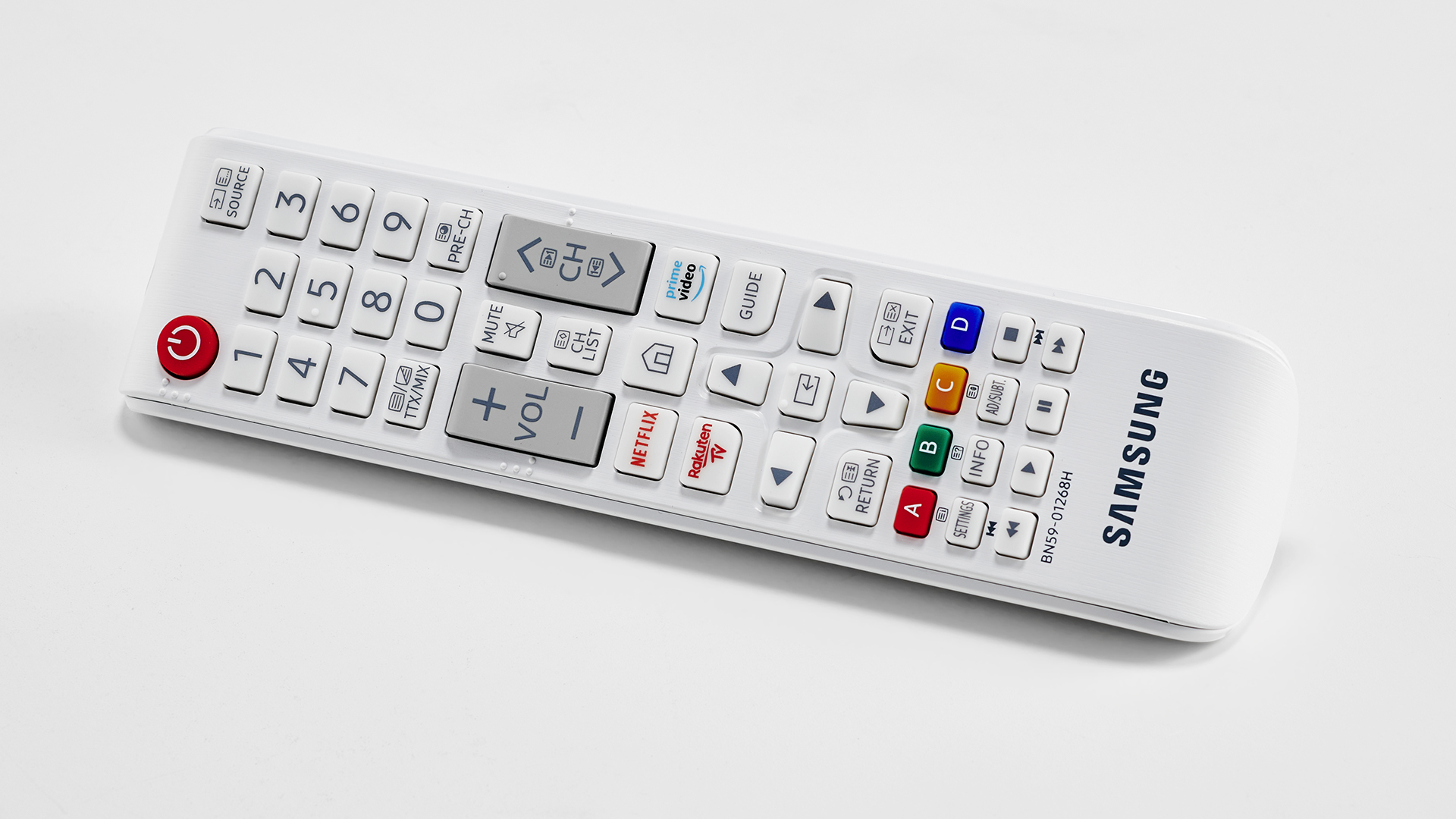
The cost in question is now £3999 / $3500 / AUS$8999. We included the ‘now’ in that previous statement because when The Premiere LSP9T first came out it cost £6999 / $6499 / AU$10,999 – not far off twice as much (in the UK and US, at least). Seeing it now selling for so much less obviously puts a smile on the face, but it also raises the question of whether it’s now a massive bargain, or whether its launch price was way too steep for the level of performance and features it offers.
Also likely rather relevant to its major pricing shift is the fact that £3999 / $3500 / AUS$8999 sits much more comfortably than £6999 / $6499 / AU$10,999 against the prices of rivals such as Hisense’s Laser TVs, Optoma’s UHZ65UST, and LG’s CineBeam models.
Design

The Premiere LSP9T’s design plays an unusually big part in its appeal. For starters, its ultra short throw design, which produces images through a ‘slot’ on the projector’s top edge after bouncing them around a series of size-enhancing internal lenses, is critical to its desire to replace your TV. It allows you, after all, to place it right up against the wall or screen you want to project onto, rather than it having to take up inconvenient residence in the middle of your room as a regular projector would.
Its crisp white finish feels better suited to living room use than the usual black or grey too and, crucially, its rear – as in the bit that faces out into the room once the projector is positioned against your wall – carries a built-in speaker system. This speaker section is big enough to enable Samsung to squeeze in a 4.2-channel system fed by a promising 40W of amplification.
The latest hi-fi, home cinema and tech news, reviews, buying advice and deals, direct to your inbox.
The Premiere LSP9T’s connections are eye-catching by projector standards for three reasons. First it carries three HDMIs rather than the maximum of two you get with almost all other current projectors. Second, it sports a Freeview HD tuner input, meaning you can use it to receive and watch TV broadcasts. Just like a TV.
Third, The Premiere LSP9T carries built-in wi-fi it can use for streaming video into a comprehensive suite of video streaming services. Just like a modern smart TV.
So TV-like is The Premiere LSP9T’s connectivity, in fact, that it feels slightly disappointing that none of its HDMIs support the latest 4K at 120Hz or variable refresh rate video gaming features. In fairness, though, precious few other projectors – ultra short throw or otherwise – support 4K/120Hz or VRR (variable refresh rate).
The Premiere LSP9T’s cool white finish tastefully extends to a remote control that also impresses with its ergonomic shape and thoughtfully stripped-back button count.
Features
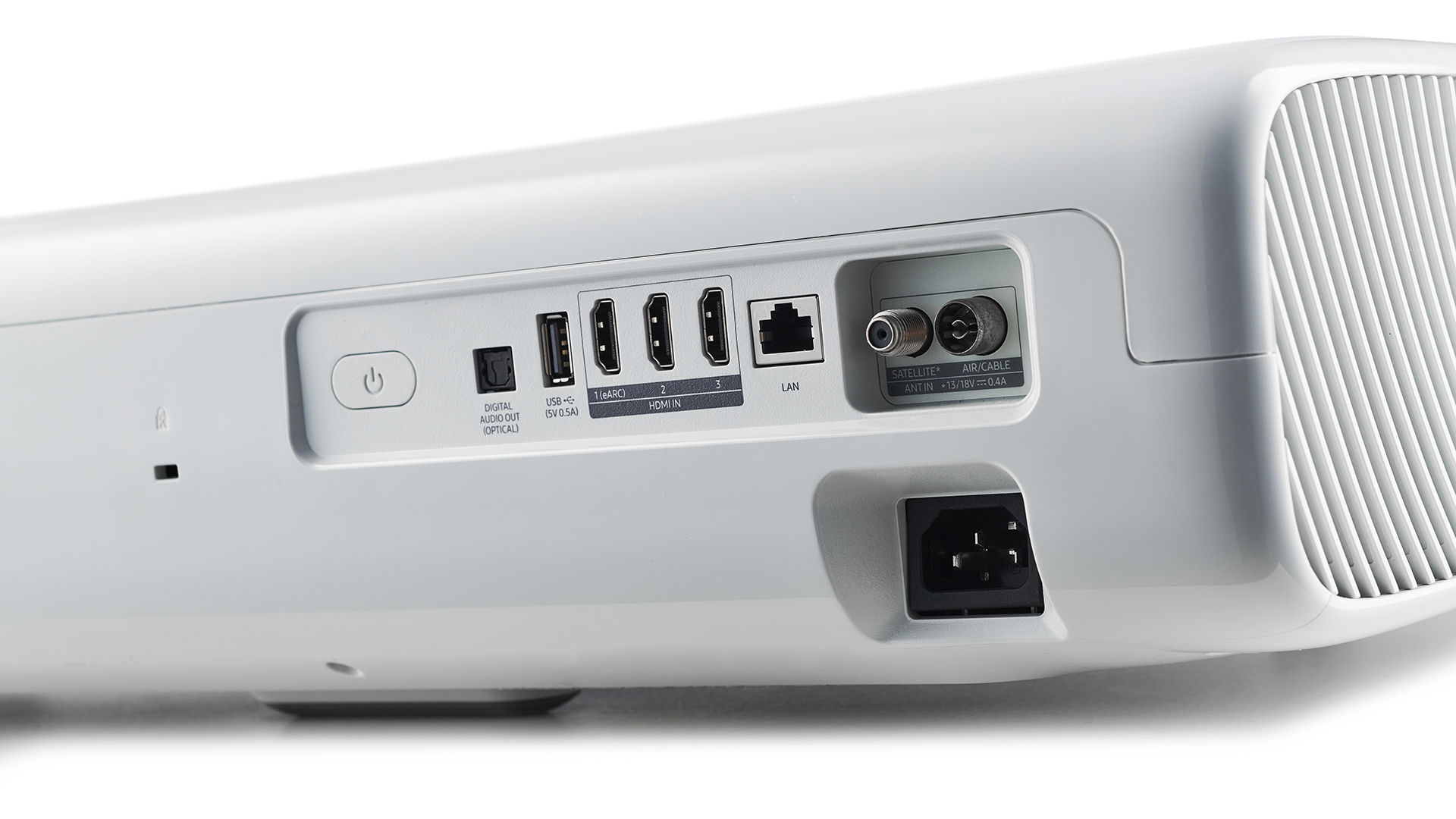
Two headline features of the Premiere LSP9T can be spotted as soon as you look at it. Namely its ultra short throw design and its impressive TV-like connectivity. There is actually lots more going on behind the scenes, though.
Not least the fact that its DLP-based optical system is illuminated by a genuine three-laser lighting system. Using three lasers means The Premiere LSP9T has a separate light source for each of the red, green and blue image elements, sparing it the need to pass light through a typical DLP colour wheel arrangement. This should allow more of the light from the lasers to actually reach your wall or screen, as well as producing a wider colour range. In fact, Samsung quotes colour coverage that extends to 147 per cent of the DCI-P3 digital cinema standard, and even 106 per cent of the BT2020 HDR standard.
Using lasers means, too, that you can turn the projector on and off with much less of the warm up/cool down wait associated with lamp projectors, and saves you from the usual faff of having to replace lamps every 2000-5000 hours. Samsung states a laser lifespan for The Premiere LSP9T of 20,000 hours – enough for 10,000 two-hour movies, or 2500 days of use if you happened to leave the projector running for eight hours a day.
What’s more, unlike lamps, lasers only lose a fraction of their performance over their lifetime. So The Premiere LSP9T should still be running pretty close to its out-of-the-box performance – which claims a high peak brightness of 2800 Lumens and images up to 130 inches in size – right up to the distant time when it’s about to hang up its boots.
In short, The Premiere LSP9T’s optical system seems premium enough, on paper at least, to help us better understand its original launch price, and potentially make its current price look very attractive indeed.
One slightly controversial thing about The Premiere LSP9T’s optical system is that while it claims to be 4K, it isn’t truly 4K in the pixel for pixel way you’ve come to expect in the TV world. Instead it uses a ‘double flashing’ system to get a 4K effect from a sub-4K array of DLP mirrors. This is a typical way for projectors at the more affordable end of the spectrum to produce 4K images and it works pretty effectively – so much so that the Consumer Technology Association in the US defines the results as true 4K.
While The Premiere LSP9T’s HDMI ports don’t support the latest cutting edge gaming graphics features, they do support eARC, enabling lossless Dolby Atmos sound to be passed through from sources to eARC-ready soundbars and AVRs/amplifiers. Also supported is HDR in the HDR10, HLG and even HDR10+ flavours. Since this is a Samsung display device, though, the HDR support doesn’t embrace Dolby Vision.
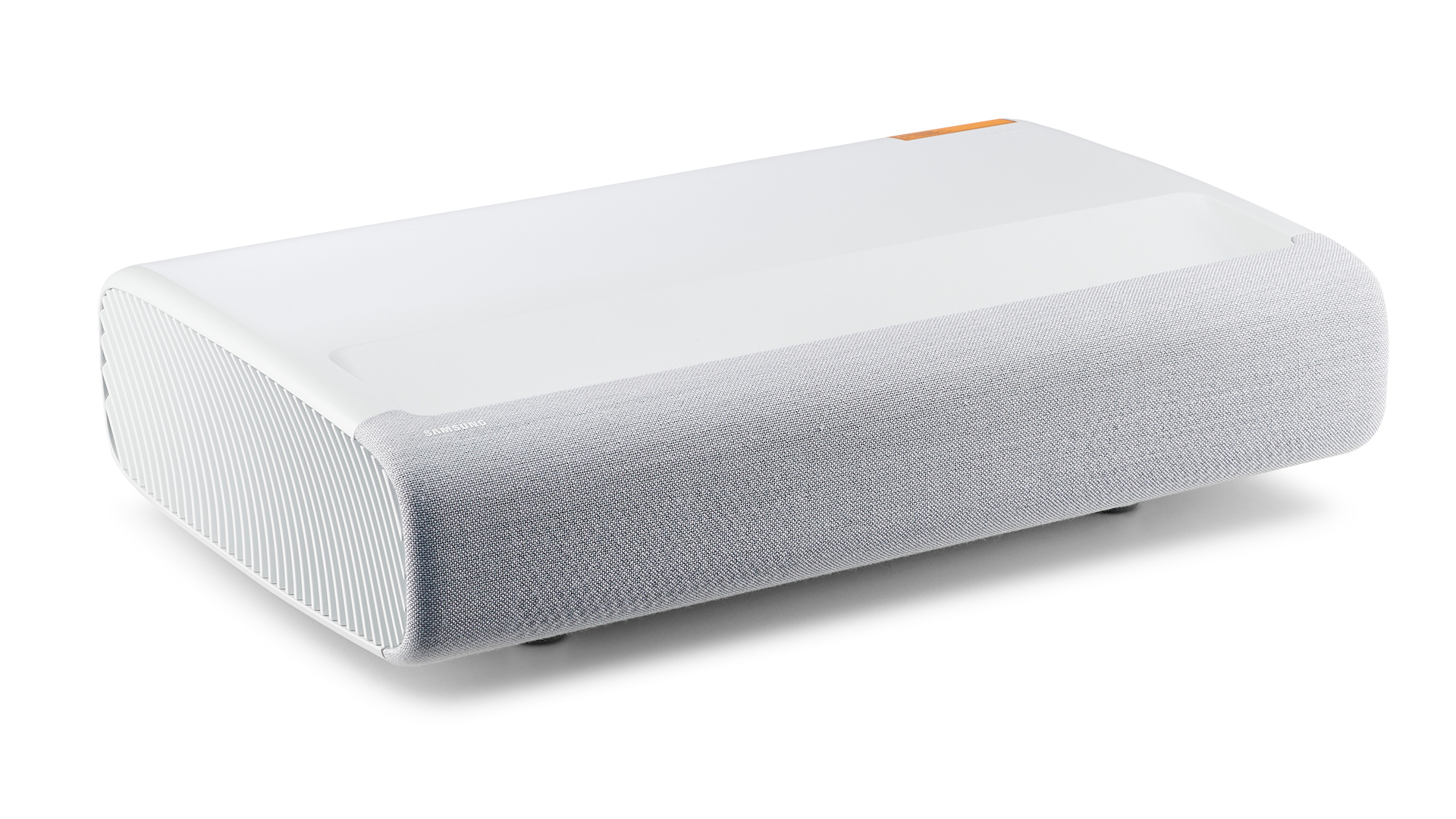
Dimensions (hwd) 141 x 550 x 367mm
Processing UHD Processor picture Engine, Auto Motion Plus and PurColor
Screen size Up to 130 inches
Native resolution 3840x2160 (kinda!)
Input in game mode 55ms
Projector type DLP with tri-laser lighting
As usual with ultra short throw projectors, The Premiere LSP9T is a bit trickier to set up than most ‘regular’ projectors. The image geometry adjustment you will almost certainly need to acquaint yourself with requires you to tweak nine interconnected image ‘points’. On the upside, though, unlike many living room projectors, the LSP9T’s ultra short throw design means that it will most likely be left permanently in position once initial set-up is complete.
The Premiere LSP9T’s smart features are built around Samsung’s Tizen system. In fact, it’s pretty much exactly the same smart system in terms of both its interface and the apps it supports as the one found on Samsung’s 2021 TVs. This is good news, as the interface is tidy and easy to follow, and the app support includes pretty much every video streaming service anyone could want, from the UK’s terrestrial broadcaster catch up apps through to the likes of Netflix, Amazon Prime Video, Disney+ and Apple TV. The only thing missing is the Freeview Play ‘wrapper’ for the UK’s broadcast catch up services.
The Premiere LSP9T even lets you access content on smart devices via Apple AirPlay 2; ’Tap’ connectivity in which just tapping a phone to the projector’s bodywork establishes a sharing connection with Samsung’s relatively recent Galaxy phones; and straightforward screen mirroring.
Being able to access all this streamed and external device content as well as a full tuner of broadcast channels really does go a long way to making you feel as if you’re watching a TV rather than a projector.
Picture
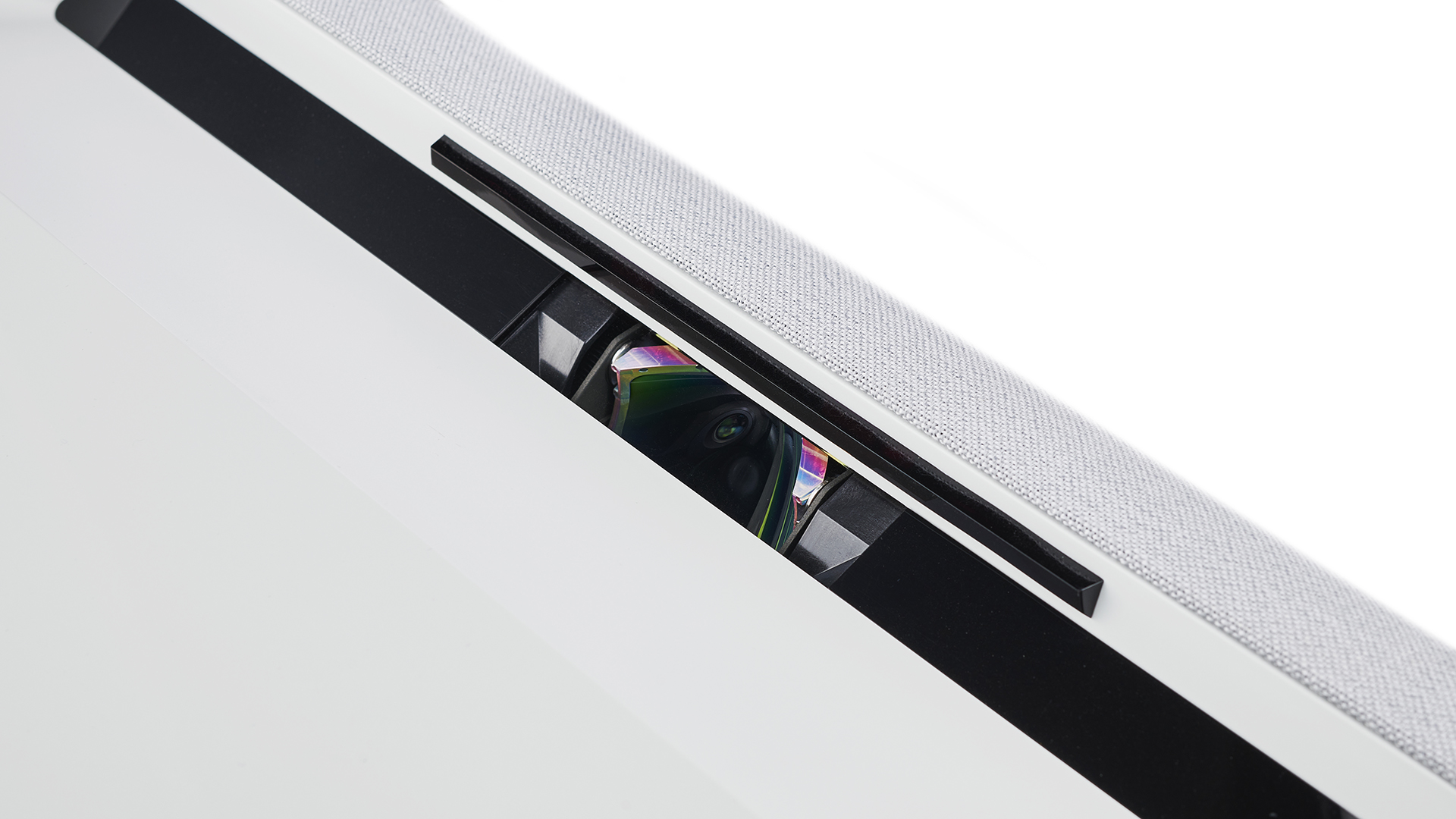
Fittingly for a projector called The Premiere, the LSP9T definitely puts on a show. Its out-of-the-box settings pump out arguably the punchiest, most vivid pictures we’ve seen from any projector costing anything like its current price. In fact, when it comes to the vibrancy of its colours in particular, we haven’t seen anything like it on any projector costing the helpful side of five figures.
Favourite 4K Blu-rays for testing colour, such as Inside Out and The Greatest Showman, erupt off a white wall (or screen if you want to take your Premiere experience to the next level, which you most certainly should if you’re able) with a purity and intensity that instantly has us thinking that one day all Premiere-like projectors will deploy triple laser lighting.
Underpinning the unique intensity of The Premiere LSP9T’s colours is a remarkable amount of brightness. The fact that its lasers don’t have to pass through a brightness-reducing colour wheel means that you really feel as if all 2800 lumens of the promised available light is making its way out of the projector and onto your screen.
Colour volumes are extreme by projector standards – an achievement that does easily as much in picture terms to make you think you’re watching a huge TV rather than a projector as do the smart features and tuner.
The striking intensity of The Premiere’s pictures also joins forces with its ultra short throw design in helping its pictures punch through even quite high levels of ambient light. Especially if you use the Bright picture preset. Not so much, perhaps, that you could get away with placing the projector in direct sunlight, or in a permanently sun-drenched conservatory. For situations such as that you’ll probably need to stick with a high-end TV. In most regular living room lighting conditions, though, The Premiere LSP9T’s images should maintain enough brightness, colour saturation and even contrast to remain not just watchable, but actually enjoyable.
The Premiere LSP9T’s startlingly aggressive pictures play very nicely with high dynamic range content compared with most projectors. There’s a clear and convincing step up in both baseline and peak brightness with HDR content, and we’re struggling to think of any other projector we’ve seen that handles the wider colour gamuts associated with HDR so well – until you get to the vastly more expensive Sony VPL-VW790ES, anyway.
While it’s the brightness and colour punch that first grab your attention, those certainly aren’t The Premiere LSP9T’s only strengths. With 4K sources, for instance, levels of detail and sharpness are outstanding. Yes, it’s true that The Premiere LSP9T isn’t truly a native 4K projector, but its pictures look so clearly superior to mere HD that it feels almost churlish to describe them as anything less than 4K.
The sharpness remains consistent right across the screen too, avoiding the difficulties ultra short throw projectors usually suffer in this regard.
Samsung has equipped The Premiere LSP9T with an excellent motion handling system too, which (provided you keep it running at a pretty low level of intensity) keeps judder looking merely natural and cinematic rather than hardware-induced, without generating many unwanted side effects.
Samsung’s TV processing know-how can also be felt in The Premiere LSP9T’s upscaling of HD content. This is intelligent enough to add high levels of detail and pixel density without exaggerating grain or source noise. Standard dynamic range images, meanwhile, don’t show off what The Premiere’s tri-laser engine can do like HDR does, but still look convincing and enjoyable.
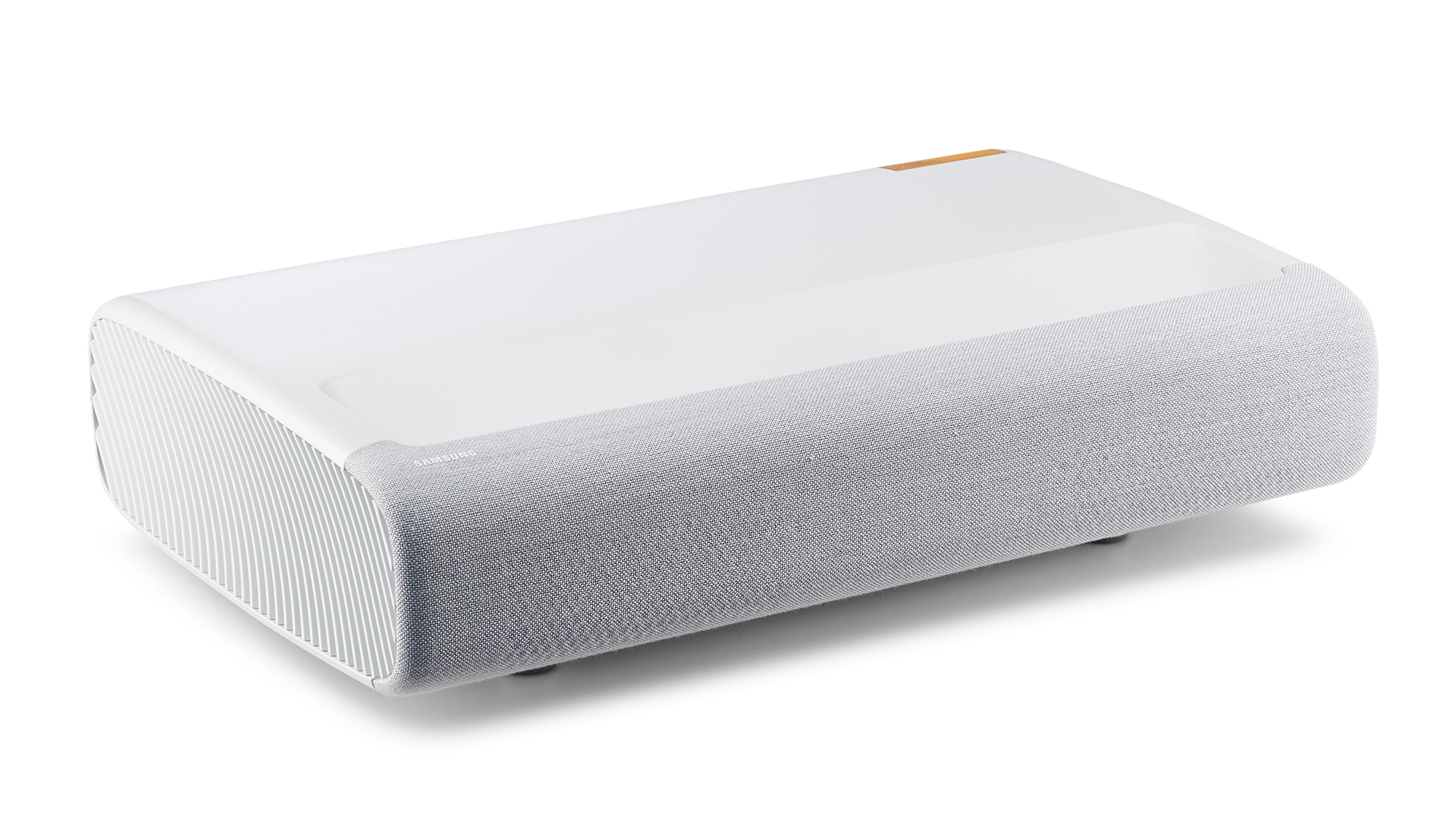
Actually, The Premiere LSP9T’s ability to adapt to a wide range of room conditions and content is one of its greatest strengths. Many projectors designed to combat ambient light struggle to make the switch to more serious home theatre conditions, but the LSP9T’s wide range of picture presets and an intriguing Dynamic Black feature make it more functional in darker rooms and with darker content than we might have expected.
Dynamic Black combines fine image analysis with nimble and intelligent aperture control to boost bright highlights while simultaneously enhancing black levels. In some ways it feels like the Dynamic HDR Enhancer system you get on Sony’s latest 4K projector, and on the Samsung’s Bright and Standard presets, at least, it works well.
The Premiere LSP9T’s Movie and Filmmaker Modes the projector carries aren’t quite as in-tune with its bold talents. The way they rein in the colour range and contrast might deliver more ‘accurate’ results, but they also feel a bit flat once you’ve got used to the other presets – a flatness that can include some slightly grey-looking blacks. With this in mind it’s perhaps a shame that there’s no option for adjusting how potently the Dynamic Black system works per preset; it’s all done automatically. You can’t accuse Samsung of not trying to cater for a wide range of image tastes and preferences, though.
There are a couple of peculiar chinks in The Premiere LSP9T’s picture armour. The most unexpected of these is the so-called Rainbow Effect, where stripes of pure red, green and blue seem to flit over bright highlights of otherwise dark pictures. The odd thing about this is that it's a common DLP issue that's usually associated with colour wheels – but the LSP9T doesn’t use one. The other problem is that, when using the usually most-likeable Bright or Standard picture presets with HDR content, colours can sometimes noticeably lose refinement during very dark scenes, especially over skin tones.
Sound

The Premiere LSP9T’s quest to make a projector feel like a TV extends to its sound. Perhaps drawing on the experience of Samsung’s soundbar division, the built-in speakers do an excellent job of pushing their sound not just forward into your room but also up, down and sideways, creating a large, immersive sound stage that often makes you forget completely that the sound is all emanating from The Premiere LSP9T’s back edge.
Vocals are slightly lifted vertically in the mix, so that they seem to be coming more from the pictures above the projector, and the speakers are sensitive enough to populate their soundstage with impressive amounts of subtle, well-positioned effects. The mid-range is dynamic and open enough to surge and expand well when pushed hard by a dramatic action scene, too.
Inevitably the weakest part of The Premiere LSP9T’s sound is its bass. This sounds a little demure in its impact and limited in the depths it can reach, though it doesn’t typically suffer from buzzing and distortion issues. At least it’s present enough to stop the projector from sounding too thin or aggressively bright.
Verdict
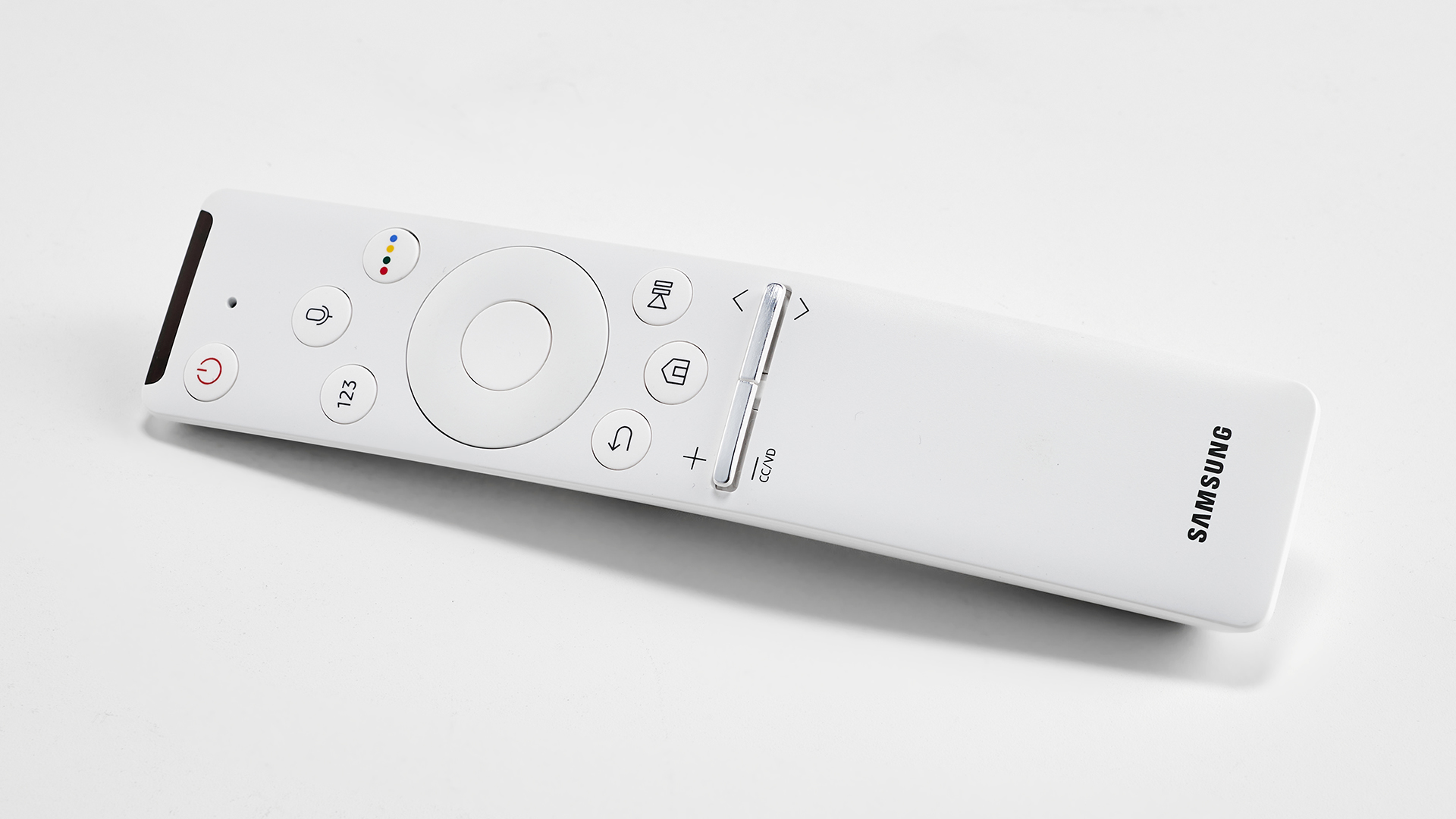
Thanks to its uniquely (by projector standards) potent audio and the remarkable colour range and brightness made possible by its tri-laser lighting system, the Premiere LSP9T really does get closer than any other projector to date to making you believe you’re watching a king-sized TV. Which is pretty handy considering that it’s going to be many, many years (if ever) before you’ll be able to get a 130-inch TV for anywhere near its asking price.
SCORES
- Picture 5
- Sound 4
- Features 5
MORE:
Also consider the Xgimi Aura
Read our review of the Epson EH-LS300
These are the best projectors you can buy
What Hi-Fi?, founded in 1976, is the world's leading independent guide to buying and owning hi-fi and home entertainment products. Our comprehensive tests help you buy the very best for your money, with our advice sections giving you step-by-step information on how to get even more from your music and movies. Everything is tested by our dedicated team of in-house reviewers in our custom-built test rooms in London, Reading and Bath. Our coveted five-star rating and Awards are recognised all over the world as the ultimate seal of approval, so you can buy with absolute confidence.

